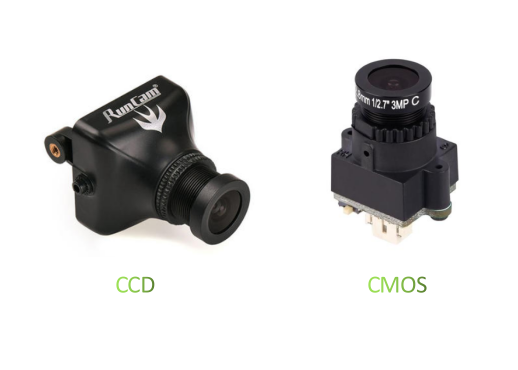
FPV camera CCD and CMOS: Features and advantages
First, let’s get to know the FPV camera
OVERVIEW
The FPV camera is one of the most important parts of the FPV setup of a quadcopter. The real-time video captured from the FPV camera is sent to the pilot via a video transmitter.
The dedicated FPV camera can provide low-latency real-time video for drone pilots in flight. Generally speaking, choosing the best FPV camera for drones and multi-rotor aircraft, it doesn't matter which video transmitter is used, the images you see are only as good as FPV cameras.
SIZE
The size of the FPV camera depends on the width-the distance between the two mounting holes on the side. Common sizes today are standard, also known as:
Nano (14mm)
Micro(19mm)
Mini (21mm)
"full size" (28mm)
WEIGHT
The weight of a dedicated FPV camera is between 4g and 20g.
There are also "AIO" (all-in-one) FPV cameras with integrated video transmitters (usually mounted on the back of the camera). They are small in size and light in weight, but are generally not the best in terms of image quality and range. They are very popular in micro drones (such as Tiny Whoop) and we usually don't use them on large drones.
Features and advantages of CCD and CMOS
CCD and CMOS are the two main image sensors in FPV cameras, each with unique characteristics and advantages.
CCD is an older technology and used to be the image sensor of choice for FPV cameras because it had better performance than CMOS at the time.
But the development of CMOS technology is indeed very rapid, if not better, it is now as good as CCD. Nowadays, almost all new FPV cameras use CMOS sensors, and they will continue to get better and cheaper.
This is a summary of the pros and cons of CCD and CMOS:
CCD

Due to the global shutter, there is less jelly effect in the lens
The image is more "original" and seems less processed. Resolution and image detail are usually lower than the optimal level of CMOS cameras
Good performance under most lighting conditions, low digital noise in low light conditions
Not optimal, but acceptable dynamic range performance and light-dark transition
Images usually have better contrast than CMOS
The performance of cameras with CCD sensors is similar. Unlike CMOS cameras, the performance is very different
CMOS

The performance and price of CMOS cameras vary greatly-the most expensive cameras are usually CMOS, ironically, the cheapest cameras are also CMOS, and CCDs are usually in the mid-price range
Latency is usually low (one or two exceptions)
Higher resolution and clearer images, the tradeoff is greater digital noise and artifacts
Low light/night FPV cameras tend to use large CMOS sensors
Rolling shutters are more likely to produce jelly
Usually more flexible/dynamic through camera settings
There is no doubt that the best CMOS cameras today outperform CCD cameras, such as Runcam Micro Eagle and Phoenix Oscar Edition.
CONCLUSIONS:
As long as you like the appearance of the image, it doesn't matter which image sensor you choose. Be sure to check the parameters before buying to see how they perform under the lighting conditions you like to fly into.


Leave a comment